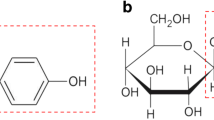Abstract
Ketoprofen (KP) is a widely used transdermal non-steroidal anti-inflammatory drug. However, increasing number of adverse effect case reports suggests that KP transdermal formulation can cause photoallergic reaction. The photoallergic potential of KP is attributable to the instability of KP under UV/visible light and subsequent formation of reactive degradation products. In this study, we investigated whether the inclusion of titanium dioxide (TiO2), a well-known mineral sunscreen agent, in the KP transdermal patch can prevent the photodegradation of KP and ultimately, can reduce photoallergic reaction. TiO2 inclusion in fabric backing effectively decreased the UV transmission through fabric patch throughout all UVA region from 320 to 380 nm and consistently, KP patch with TiO2 exhibited significantly increased photostability of KP. This enhanced photostability of KP resulted in reduced generation of photodegradation product as determined by HPLC–UV analysis. In a good accordance with these in vitro results, photosensitization test in guinea pig in vivo demonstrated low photoallergic reactions of KP patch with TiO2 compared to KP patch without TiO2, indeed. This study demonstrated that KP transdermal patch with TiO2-included backing can provide with improved photostability and photosafety over conventional fabric KP patch.





Similar content being viewed by others
References
Alastair K, James F (2010) Photoallergic contact dermatitis. Photodermatol Photoimmunol Photomed 26:56–65
Albes B, Marguery MC, Schwarze HP, Journe F, Loche F, Bazex J (2000) Prolonged photosensitivity following contact photoallergy to ketoprofen. Dermatology 201:171–174
Bagheri H, Lhiaubet V, Montastruc JL, Chouini-Lalanne N (2000) Photosensitivity to ketoprofen: mechanisms and pharmacoepidemiological data. Drug Saf 22:339–349
Devleeschouwer V, Roelandts R, Garmyn M, Goossens A (2008) Allergic and photoallergic contact dermatitis from ketoprofen: results of (photo) patch testing and follow-up of 42 patients. Contact Derm 58:159–166
Diaz RL, Gardeazabal J, Manrique P, Raton JA, Urrutia I, Rodriguez-Sasiain JM, Aguirre C (2006) Greater allergenicity of topical ketoprofen in contact dermatitis confirmed by use. Contact Derm 54:239–243
Dondi D, Albini A, Serpone N (2006) Interactions between different solar UVB/UVA filters contained in commercial suncreams and consequent loss of UV protection. Photochem Photobiol Sci 5:835–843
Emmert B, Schauder S, Palm H, Hallier E, Emmert S (2007) Disabling work-related persistent photosensitivity following photoallergic contact dermatitis from chlorpromazine and olaquindox in a pig breeder. Ann Agric Environ Med 14:329–333
Erhard HZ, Percy L, Norbert N (2009) Phototoxic and photoallergic reactions. J Dtsch Dermatol Ges 7:643–648
Gerberick GF, Ryan CA (1989) Contact photoallergy testing of sunscreens in guinea pigs. Contact Derm 20:251–259
Heo SK, Cho J, Cheon JW, Choi MK, Im DS, Kim JJ, Choi YG, Jeon do Y, Chung SJ, Shim CK, Kim DD (2008) Pharmacokinetics and pharmacodynamics of ketoprofen plasters. Biopharm Drug Dispos 29:37–44
Hinds M, Isaksson ME, Persson L, Zimersson E, Bruze M (2004) Photoallergic contact dermatitis from ketoprofen induced by drug-contaminated personal objects. J Am Acad Dermatol 50:215–219
Kantor TG (1986) Ketoprofen: a review of its pharmacologic and clinical properties. Pharmacotherapy 6:93–103
Kligman AM, Basketter DA (1995) A critical commentary and updating of the guinea pig maximization test. Contact Derm 32:129–134
Lee BS, Choi YG, Son WC, Jung KM, Kim JJ, Kim BH (2007) Ketoprofen: experimental overview of dermal toxicity. Arch Toxicol 81:743–748
Loden M, Akerstrom U, Lindahl K, Berne B (2004) Bioequivalence determination of topical ketoprofen using a dermatopharmacokinetic approach and excised skin penetration. Int J Pharm 284:23–30
Mazieres B (2005) Topical ketoprofen patch. Drugs R D 6:337–344
Nakazawa T, Shimo T, Chikamatsu N, Igarashi T, Nagata O, Yamamoto M (2006) Study on the mechanism of photosensitive dermatitis caused by ketoprofen in the guinea pig. Arch Toxicol 80:442–448
Noize P, Benard-Laribiere A, Aulois-Griot M, Moore N, Miremont-Salame G, and Haramburu F (2010) Cutaneous adverse effects of ketoprofen for topical use: clinical patterns and costs. Am J Clin Dermatol 11:131–136
Paolino D, Ventura CA, Nistico S, Puglisi G, Fresta M (2002) Lecithin microemulsions for the topical administration of ketoprofen: percutaneous adsorption through human skin and in vivo human skin tolerability. Int J Pharm 244:21–31
Rhee YS, Choi JG, Park ES, Chi SC (2001) Transdermal delivery of ketoprofen using microemulsions. Int J Pharm 228:161–170
Serrano G, Fortea JM, Latasa JM, Millan F, Janes C, Bosca F, Miranda MA (1992) Photosensitivity induced by fibric acid derivatives and its relation to photocontact dermatitis to ketoprofen. J Am Acad Dermatol 27:204–208
Shinkai N, Korenaga K, Mizu H, Yamauchi H (2008) Intra-articular penetration of ketoprofen and analgesic effects after topical patch application in rats. J Control Release 131:107–112
Tonnesen HH (2001) Formulation and stability testing of photolabile drugs. Int J Pharm 225:1–14
Wakefield G, Stott J (2007) Photostabilization of organic UV-absorbing and anti-oxidant cosmetic components in formulations containing micronized manganese-doped titanium oxide. Int J Cosmet Sci 29:139
Author information
Authors and Affiliations
Corresponding authors
Rights and permissions
About this article
Cite this article
Choi, YG., Lee, J.H., Bae, IH. et al. Titanium dioxide inclusion in backing reduce the photoallergenicity of ketoprofen transdermal patch. Arch Toxicol 85, 219–226 (2011). https://doi.org/10.1007/s00204-010-0569-x
Received:
Accepted:
Published:
Issue Date:
DOI: https://doi.org/10.1007/s00204-010-0569-x




